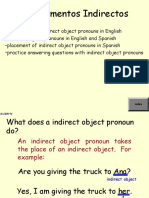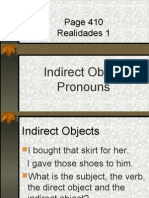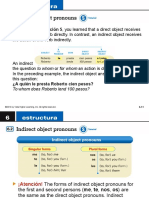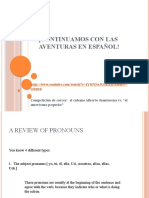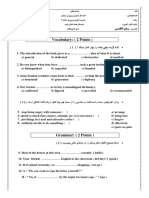0% found this document useful (0 votes)
5 views6 pagesSpanishModule6 Advanced
This module focuses on the use of direct and indirect object pronouns in Spanish, emphasizing their proper application in sentences. It provides rules for pronoun placement, the distinction between direct and indirect objects, and the use of the personal 'a'. Exercises are included to reinforce understanding of these grammatical concepts.
Uploaded by
Yvette LogmaoCopyright
© © All Rights Reserved
We take content rights seriously. If you suspect this is your content, claim it here.
Available Formats
Download as PDF, TXT or read online on Scribd
0% found this document useful (0 votes)
5 views6 pagesSpanishModule6 Advanced
This module focuses on the use of direct and indirect object pronouns in Spanish, emphasizing their proper application in sentences. It provides rules for pronoun placement, the distinction between direct and indirect objects, and the use of the personal 'a'. Exercises are included to reinforce understanding of these grammatical concepts.
Uploaded by
Yvette LogmaoCopyright
© © All Rights Reserved
We take content rights seriously. If you suspect this is your content, claim it here.
Available Formats
Download as PDF, TXT or read online on Scribd
/ 6





























